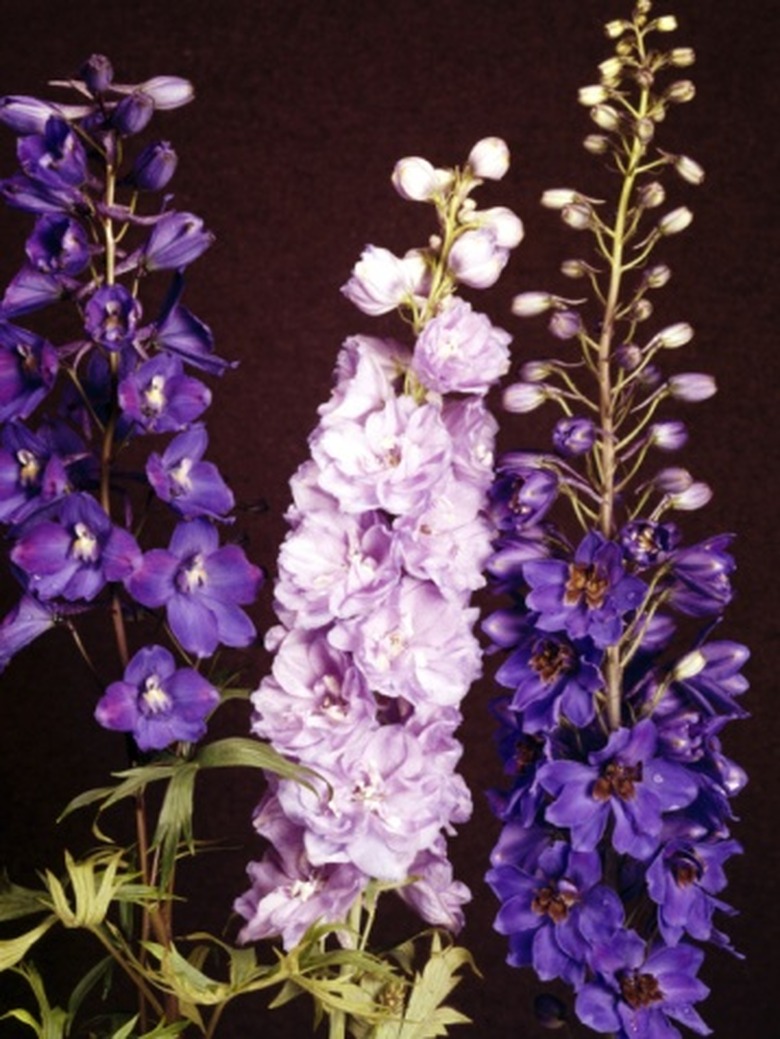When Do Delphiniums Bloom?
Delphiniums offer color to gardens through much of the summer with a relatively long blooming season. A hardy perennial, the delphinium can reach 8 feet in height and spread horizontally to about 2 feet. The flower blooms in pink, white, blue and purple. Proper handling techniques can extend the blooming season beyond its normal range.
Summer Blooms
Delphiniums bloom in the first weeks of summer, depending on local weather conditions. Some hybrid varieties bloom a few weeks later in midsummer. Flowers can be cut for indoor use and will typically last about one week before wilting. If the flower is left on the plant, it may require a stake to hold the rather weak stalk steady during winds.
- Delphiniums offer color to gardens through much of the summer with a relatively long blooming season.
- Flowers can be cut for indoor use and will typically last about one week before wilting.
Clipping the Blooms
Cut the flower stalks after the bloom begins to dry. This practice is particularly important with the Chinese delphinium, which will continue to bloom through the summer if the drying blooms are clipped after each flower completes its cycle.
Fall Blooms
The delphinium will bloom again in the fall if the flower stalks were clipped during the summer bloom period. Commonly the blooms are not as large as the summer blooms.
New Plants
While the delphinium is a perennial, it typically lives three years or less in standard garden conditions. The flower will behave like an annual and bloom the same year it is planted if the spring planting is done early enough and conditions cooperate. Some gardeners treat the plant like an annual and replant every season rather than planning on the plant coming back year after year.
- Cut the flower stalks after the bloom begins to dry.
- The delphinium will bloom again in the fall if the flower stalks were clipped during the summer bloom period.
Grow Blue Butterfly Delphiniums
Water delphiniums to keep the soil moist but never soggy. Never allow the soil to become completely dry. Delphinium is susceptible to mildew, rot and other problems caused by damp conditions. Refer to the instructions on the container for specific information regarding rate of application. To deadhead delphinium, use your fingernails or garden pruners to remove the spent bloom and stem down to the point where you see a new bud, flower or leaf. Cut delphinium stalks to the ground in late summer or early autumn.
References
- Utah State University; Delphiniums Are Pretty Tough; Dennis Hinkamp
- Michigan State University Extension: Delphinium elatum
- Colorado State University: Delphinium: The Diva of the Colorado Garden
- University of Nebraska Extension: Delphiniums — A Spectacular Garden Flower
- The Old Farmer's Almanac: Delphiniums
- Midwest Gardening: Delphinium "Blue Butterfly"
- North Carolina State University Extension: Delphinium spp., Characteristics
